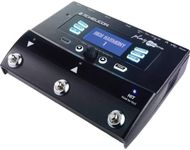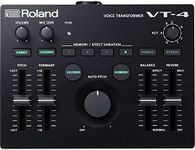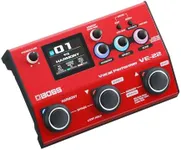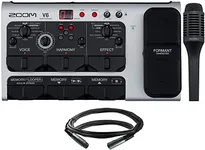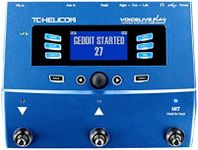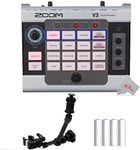Buying Guide for the Best Vocal Harmony Processors
Choosing the right vocal harmony processor can significantly enhance your musical performances by adding depth and richness to your vocals. These devices are designed to create harmonies that complement your voice, making your music sound fuller and more professional. When selecting a vocal harmony processor, it's important to consider several key specifications to ensure you get the best fit for your needs. Understanding these specs will help you make an informed decision and find a processor that matches your style and requirements.Number of Harmony VoicesThe number of harmony voices refers to how many additional vocal parts the processor can generate simultaneously. This is important because it determines the complexity and fullness of the harmonies you can create. Processors typically offer anywhere from one to eight harmony voices. If you are a solo performer or prefer simple harmonies, a processor with one to three voices may suffice. For more complex arrangements or group performances, you might want a processor that can handle four or more voices.
Harmony ModesHarmony modes dictate how the processor generates harmonies based on your input. Common modes include scale-based, chord-based, and manual. Scale-based modes create harmonies according to a specific musical scale, which is useful for consistent harmony within a key. Chord-based modes generate harmonies based on the chords you play on an instrument, offering more dynamic and context-sensitive harmonies. Manual modes allow you to set specific intervals for each harmony voice. Choose a processor with the mode that best fits your musical style and performance setup.
Pitch CorrectionPitch correction helps ensure that your harmonies are in tune by automatically adjusting the pitch of your voice. This feature is crucial for maintaining a professional sound, especially in live performances where perfect pitch is challenging to achieve. Some processors offer subtle pitch correction, while others provide more aggressive tuning options. If you want a natural sound, look for a processor with adjustable pitch correction settings so you can fine-tune the level of correction to your preference.
Effects and PresetsMany vocal harmony processors come with built-in effects such as reverb, delay, and modulation, as well as preset harmony settings. These features can enhance your vocal performance by adding depth and texture to your sound. Effects and presets are particularly useful for live performances, allowing you to quickly switch between different sounds and settings. If you perform a variety of musical styles, look for a processor with a wide range of effects and customizable presets to suit different songs and genres.
ConnectivityConnectivity options determine how you can integrate the vocal harmony processor with other equipment. Common connections include XLR inputs and outputs, MIDI, USB, and auxiliary inputs. These connections are important for ensuring compatibility with your microphone, instruments, and recording or live sound systems. If you plan to use the processor in a studio setting, look for one with USB or MIDI connectivity for easy integration with your digital audio workstation (DAW). For live performances, ensure the processor has robust XLR connections for reliable sound quality.
User Interface and ControlsThe user interface and controls of a vocal harmony processor affect how easily you can operate the device. A clear, intuitive interface with accessible controls is important for making quick adjustments during performances. Some processors feature touchscreens, while others use buttons and knobs. Consider your comfort level with different types of interfaces and choose one that you find easy to navigate. If you perform live frequently, look for a processor with footswitch controls for hands-free operation.

